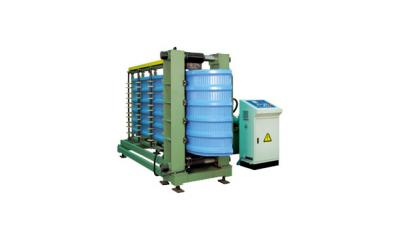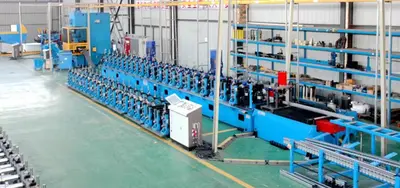The Design of Roller in Roll Forming Equipment and Its Matching Straightening Mechanism
1. The design of rolls in roll forming equipment
The roll in the roll forming equipment is a very important part of it. Its design and manufacturing characteristics are as follows: each pass should be equally stressed in order to be able to wear evenly, thereby prolonging the service life of the roll. Generally, the roll is made of C12MoV material, because this material has good wear resistance, but it is necessary to pay attention to the hardness and strength, so it must be handled well.
The upper and lower rolls or horizontal wheels should be protected by effective tube bundles, otherwise problems are prone to occur during use. For example, the sliding track will get blurred and deformed, and the force will be uneven, which will shorten its convenient life. In the rolling process of the rollforming equipment, the rolling stability must be considered.
If the material swings left and right in the raceway, then we have to take corresponding measures. For example, when assembling, the gap in each area of the roller can be kept consistent. And before the material bites in, a guide bevel can be set to avoid this problem. In the production process, if there is a bending and twisting phenomenon, the main reason is the unbalanced force, so we must set a balenced force in design so that the processing can be accurate.
2. Why the roll forming equipment uses a straightening mechanism
A basic principle of the roll forming equipment process is that the strip is bent in a straight line along the longitudinal direction. However, the combination of the pressure generated during the bending deformation and the residual stress in the strip often causes the strip to deviate from the equipment. In order to solve this problem, a straightening mechanism should be used at the end of the roll forming equipment.
The basic principle of the straightening mechanism is to apply sufficient pressure in the opposite direction through the straightening mechanism to deform the profile with defects such as side bending and warping. If the amount of deformation in the opposite direction is appropriate, the profile can be completely straightened after rebounding. If the profile is twisted and deformed in a certain direction, the straightening mechanism rotates the profile in the opposite direction in order to produce plastic deformation. If the angle of rotation is appropriate, the profile will no longer be twisted after rebounding.


 CN
CN
 EN
EN
 fr
fr  de
de  es
es  it
it  ru
ru  pt
pt  ar
ar  th
th  pl
pl  ro
ro 







 Call us on:
Call us on:  Email Us:
Email Us:  #1809, Jianhu Rd, Keqiao, Shaoxing, Zhejiang, China
#1809, Jianhu Rd, Keqiao, Shaoxing, Zhejiang, China 